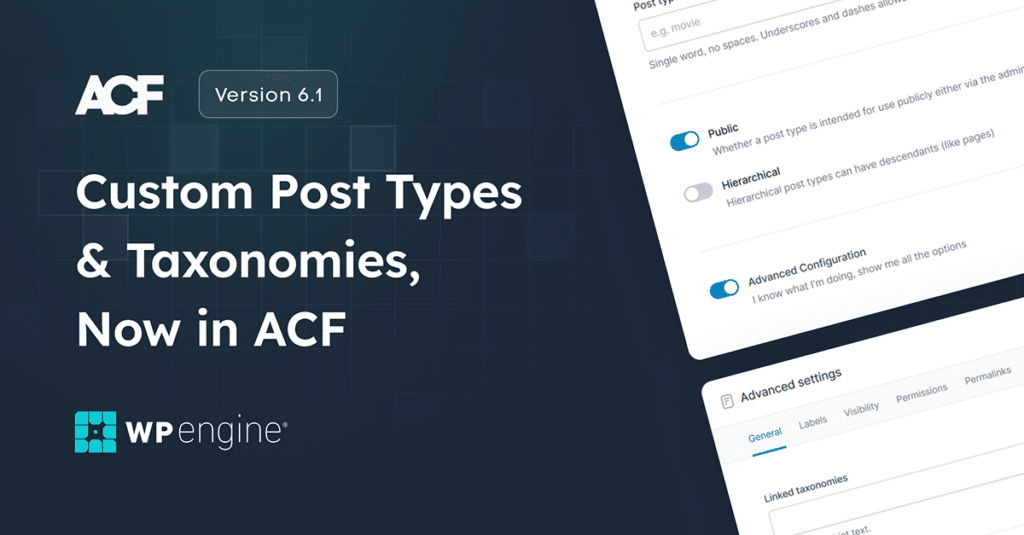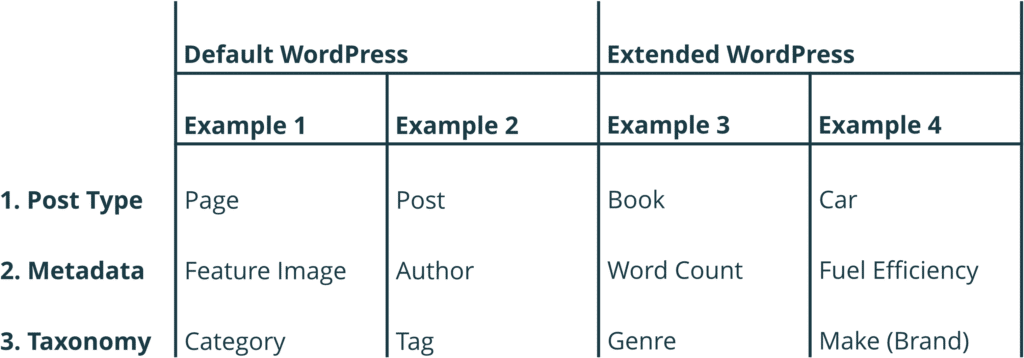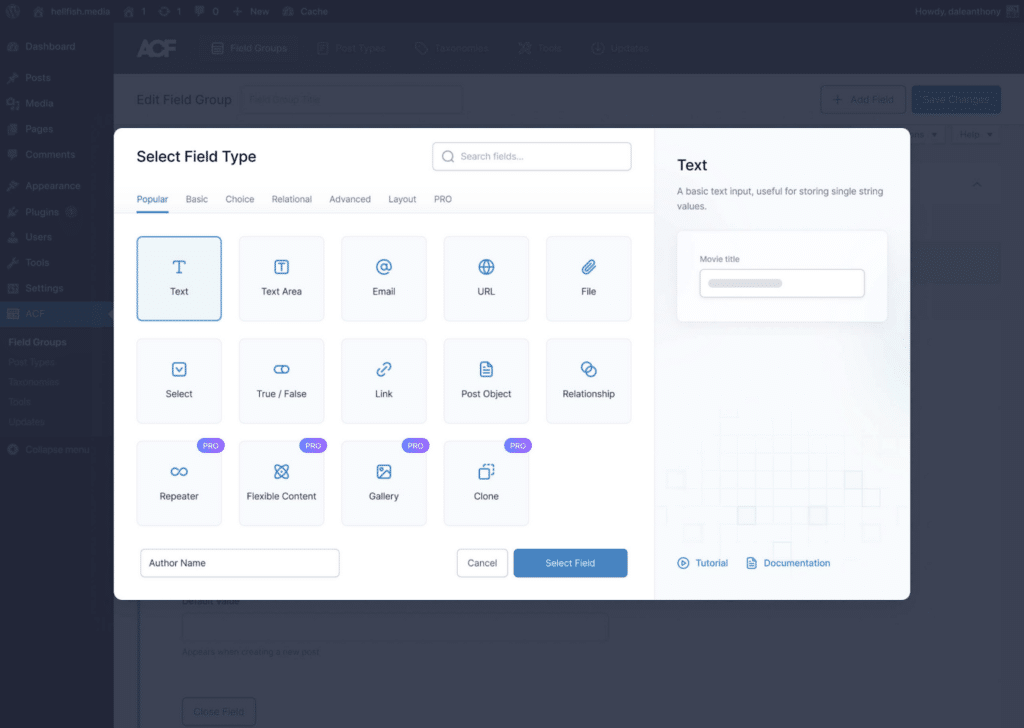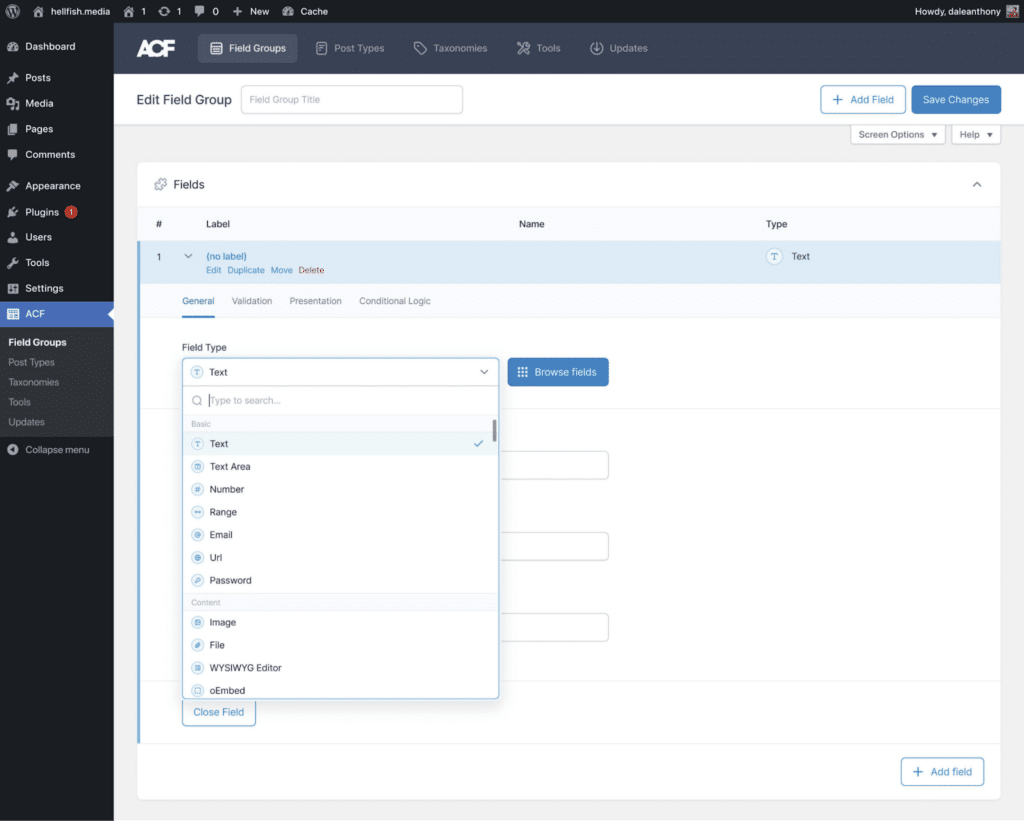
Custom Post Types and Taxonomies in ACF 6.1
Advanced Custom Fields becomes a full content modeling powerhouse with the latest 6.1 release!
Custom fields are the standard method for assigning custom metadata to posts and pages in WordPress, and for more than 10 years, Advanced Custom Fields has been the undisputed leading solution for developers and content creators who want simplicity and flexibility. Features like field groups, conditional logic, the Repeater field, Relationship fields, and more recently custom ACF Blocks, have made the plugin an invaluable tool for many freelancers and agencies. More than 4.5 million websites now use ACF to extend WordPress.
Now, with the release of ACF 6.1, the next generation of ACF rolls out. With version 6.1, you can not only use the plugin to add custom fields, but also add and configure custom post types and custom taxonomies.
What This Means
When extending WordPress, there is a common structure for how data is modeled for a website or application. It often has three pieces and looks something like the table below, showing how things are in WordPress core and how things look when folk extend WordPress:

The post types, metadata, and taxonomies for examples 1 and 2 are included out-of-the-box in WordPress. If you’ve ever written a blog post in WordPress, these will be familiar to you. Examples 3 and 4 show custom implementations where a developer extends WordPress to facilitate these for the website or application they are building. Examples being for “book review” and “car listing” websites.
Up until today, Advanced Custom Fields handled (quite brilliantly, might I add) only metadata. With version 6.1, it now handles the full three layers. These three layers of configuration are often called content modeling and are something so widely implemented across sites built with ACF that it made sense to bring these features into the core plugin.
Bringing these features together means that site developers can now minimize the number of plugins they need to rely on when scaffolding out their content model.
A Boon to Headless WordPress Developers
Another very exciting factor of these new features is the behind-the-scenes API improvements. Developers love ACF for its beautiful balance between flexibility and structure and often use it for headless WordPress applications.
We frequently see sites hosted with our Headless WordPress platform using ACF as their content modeling tool of choice. With these updates, headless WordPress developers can take ACF even further as the standardized foundation for their headless projects.
Better In-App Feature Discovery
Too often in software, users don’t know a feature exists until they need it and go looking for it. This can sometimes mean our users miss out on value. Our recent “7 Things You Didn’t Know You Could Do With ACF” session at DE{CODE} was a testament to this in ACF. We showcased a roster of features, tips, and tricks that highlighted unrealized value to many long-term ACF users.
With 6.1 we’re starting to introduce improvements to the UI that encourage native and contextual discovery. For instance, as a user selects a field type they can optionally “browse fields”, opening a modal with far more context than the simple drop-down list provides.


Free as in Beer
Now you may assume that these new features are only available in ACF PRO. Well, you would be incorrect! Registering custom taxonomies and post types can be done in both the free and PRO versions of ACF.
At WP Engine, we’re committed to enabling as broad an audience of WordPress professionals as possible to build incredible sites. We’re incredibly excited to bring the value of these new features to all ACF users, for both traditional and headless projects.
Level up Your ACF Skillz
ACF is central to the way so many build with WordPress and our developer advocate team is investing more and more into events and content to enable you to succeed. If you’re looking to grow as a WordPress professional, make sure you check out our Builders community. Plenty of ACF goodness is waiting there for you!
Start the conversation.